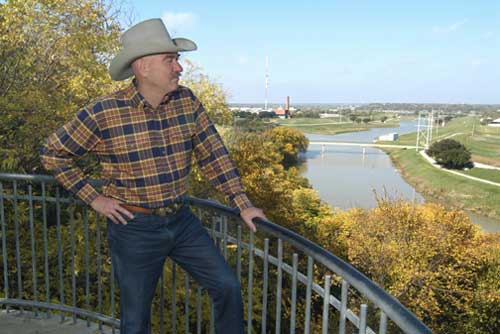 The bluff
The bluff–Fort Worth Tours historian Dawson Granade shows a recent tour the view off the bluff looking north from downtown Fort Worth. Dawson is standing near the spot Major Ripley Arnold stood as he gazed out over an area where the West and Clear Forks of the Trinity River merged. Major Arnold decided to build his fort here and Fort Worth had its beginning.
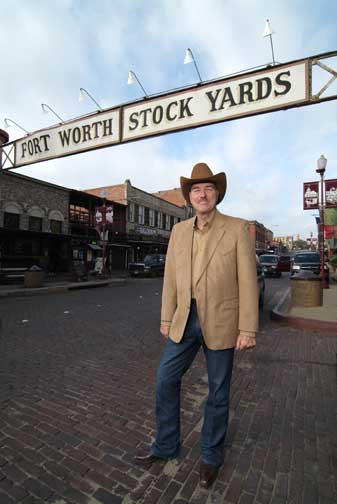 Stockyards Entrance
Stockyards Entrance–Fort Worth Tours historian Dawson Granade is shown here in the historic Stockyards District during a recent tour of the area. The Stockyard’s entrance sign in the background is a landmark structure that was built in 1910. The huge columns supporting the sign were quite an accomplishment for the time.
 Tarrant County Courthouse
Tarrant County Courthouse–Since its completion in 1895, the Tarrant County Courthouse has been the focal point for millions of people traveling north on Main Street in downtown Fort Worth. The building was built at a cost of a little more than $400,000. Even though it was built “under budget”, the citizens of Fort Worth voted all the County Commissioners out of office at the next election. A depressed economy led to bitter frustration of the Commissioners by the Fort Worth electorate.
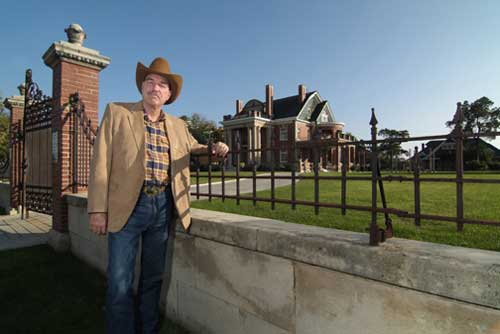 Thistle Hill
Thistle Hill–Oh, if these walls could talk! Thistle Hill was once the home of two of Fort Worth’s richest and most influential families. It was originally built as a wedding gift for Electra Waggoner, who was known as Texas’ first socialite. Later Winfield and Elizabeth Scott purchased the home. Mr. Scott died while remodeling the home at a cost of $100,000, a tremendous amount for that time period. Though he never lived at Thistle Hill, Elizabeth resided there for 27 years before passing away in 1938.
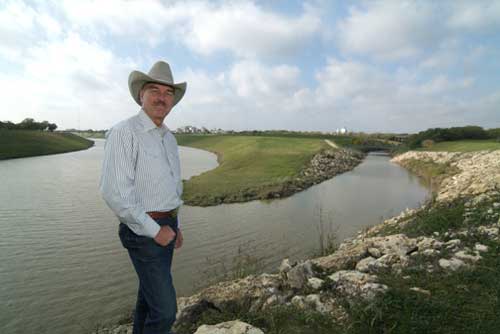 Daggett’s Crossing
Daggett’s Crossing–One of the fords that people used to cross the Trinity River was called Daggett’s Crossing. It was located a little more than two miles northeast of Fort Worth. The Daggetts owned and operated a ferry at this spot on the Trinity River. Millions of cattle passed through this crossing in the 1860s and1870s. The family also owned a farm in the area where Mt. Olivet Cemetery is presently located. Fort Worth Tours historian Dawson Granade’s family is buried in that cemetery.
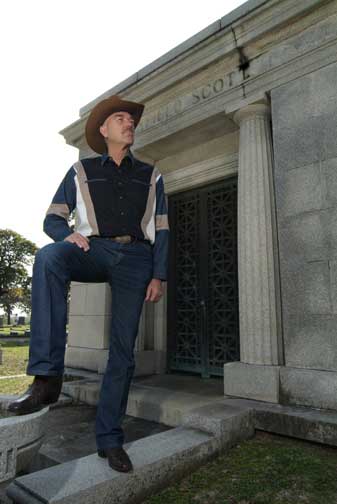 Oakwood Cemetery - Winfield Scott
Oakwood Cemetery - Winfield Scott–In 1879, John Peter Smith (the father of Fort Worth) donated 20 acres to Fort Worth to be used as the new city cemetery. It has now expanded to a little over 100 acres. Oakwood Cemetery is the final resting place for outlaws, lawmen, gamblers, and prostitutes, along with many of the founders, socialites, and builders of Fort Worth and its colorful history. One of those influential citizens was Winfield Scott. Fort Worth Tours historian Dawson Granade stands in front of the Scott mausoleum. Scott is one of a number of cattle and oil barons buried here at Oakwood along with their families. Mr. Scott borrowed $500 to purchase his first cattle and then parlayed that into more cattle, then land, then oil. Scott and his wife Elizabeth were the second owners of Thistle Hill. After purchasing it for $90,000, a huge sum at that time, the Scotts then spent $100,000 more remodeling. Unfortunately, Mr. Scott died before the remodeling was completed. His widow Elizabeth lived there for 27 years until she passed away in 1938.
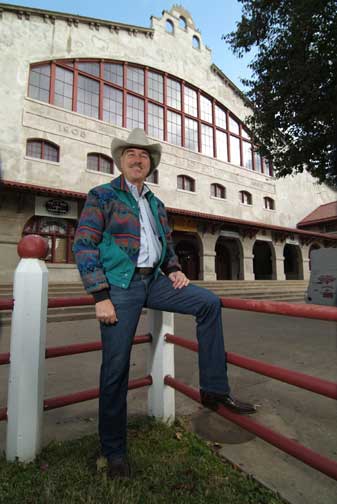 Cowtown Coliseum
Cowtown Coliseum–Cattlemen had been having a “fat” stock show on the banks of Marine Creek ever since cattleman Charles McFarland persuaded Samuel Burk Burnett and some of his friends to show off their best stock in 1896. For over ten years, spectators watched the event in the sun, wind, and rain. Once the decision was made in 1908 to build the Coliseum, it was completed in only 88 working days. In 1918, the Coliseum hosted the world’s first indoor rodeo and continues to hold rodeos there to this day.
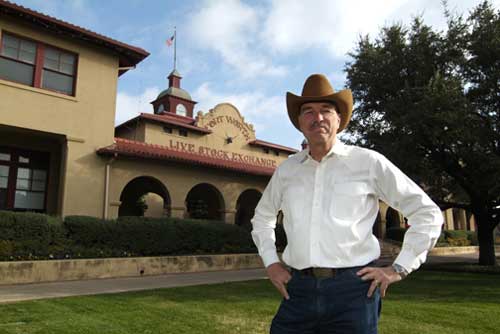 The Livestock Exchange Building
The Livestock Exchange Building–Beginning in 1903, the Livestock Exchange Building became the “nerve center” of activity in the Stockyards. It became known as the “Wall Street of the West.” Instead of paper stocks and bonds, it dealt with “live” stock. Commission companies had offices here and livestock prices were posted here from all over the globe. On any given day, the activity in this building was hectic, to say the least.















